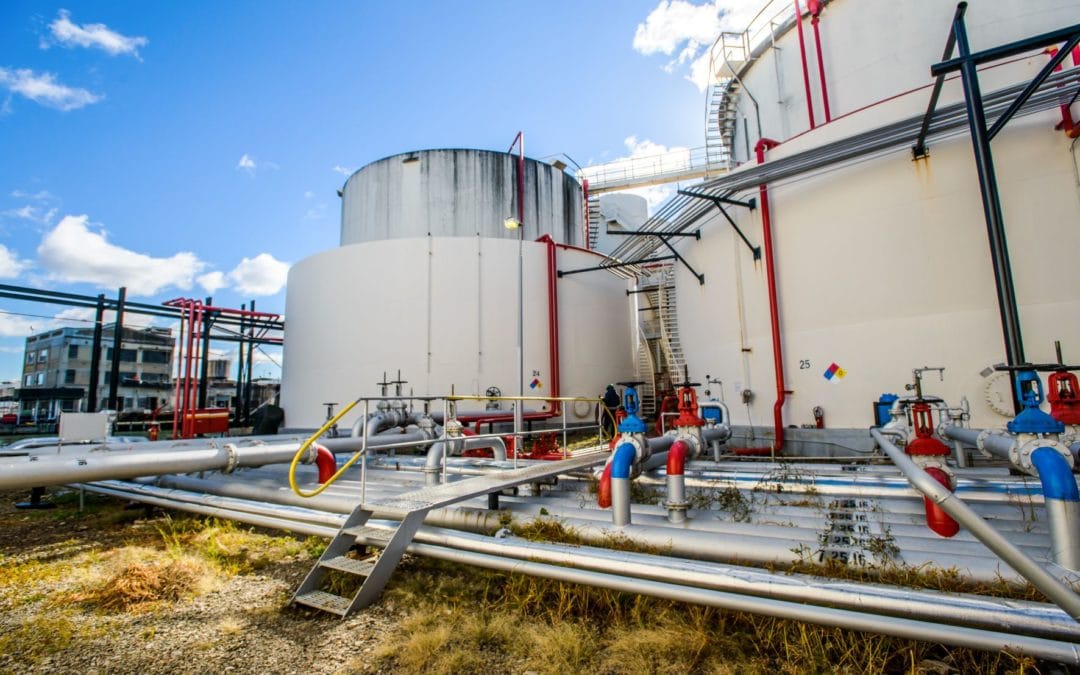Storage tanks pose potential safety risks to both environmental and public health. This leaves many questions as to how industries using above ground tanks can prevent emergencies such as leaks and spills from occurring.
Working under the guidance of federal regulations, certified tank inspections are educated and trained to identify potential problems before they become hazards, and provide a wealth of valuable knowledge to tank owners.
The inspection of above-ground tanks (AST) is increasingly important as more environmentally-friendly measures are being taken into consideration with the discussion of potentially hazardous liquids and gasses stored in these tanks. Under the U.S. Environmental Protection Agency, there are rules in place for spill and leak prevention that are pertinent to owning and operating an AST.
In 2000, the Steel Tank Institute (STI) released the first Standard for the Inspection of Above-Ground Storage tanks as a preventative and compliance measure. This standard, known as the STI SP001 Standard, has been routinely updated by tank owners, industry professionals, and manufacturers as more knowledge and data has become available over time.
Let’s take a look at what the STI SP001 Standard is and how it complies with the EPA’s tank integrity testing measures.
Understanding the STI SP001 Standard
The STI SP001 Standard was specifically designed for the maintenance and integrity of above-ground storage tanks. Above-ground storage tanks, while used more frequently than other storage tanks, are still in the same risk category when it comes to possible environmental and public health safety concerns.
What Tanks Does the STI SP001 Standard Apply To?
STI SP001 deals directly with above-ground tanks measuring up to 30 feet in diameter and 50 feet tall, but this standard is most commonly used for the inspection of tanks ranging from 10,000 to 30,000 gallons that are made of carbon steel and jop fabricated, rather than field erected. This groundwork allows for most industry tanks to be inspected under this specific standard.
How Often Do ASTs Need to Undergo This Inspection?
Given that each tank is built differently and stores different liquids or gasses, these characteristics need to be taken into consideration when planning out routine inspections.
The frequency of the STI SP001 Standard inspection depends on several characteristics of the tank in question including the type of product being stored, the volume of the product being stored, and the tank’s ability to withstand potential problems or emergencies should they occur.
Intervals for these inspections are broken down into separate categories as well.
- Category #1 includes ASTs with spill control and continuous release detection methods (or CRDMs).
- Category #2 includes ASTs with spill control and without CRDMs.
- Category #3 includes ASTs without spill control.
Given that no spill control would indicate the potential for more risk in the event of an emergency, Category #3 tanks are inspected most frequently, though the time frame depends on the AST type and volume.
What Do Inspectors Look for During an STI SP001 Inspection?
Using a risk-based approach, certified inspectors are capable of performing several tests and analyses depending on the required inspection. These include pressure leak tests, Ultrasonic Testing, spill analysis, coating inspection, environmental hazards & fire prevention assessments.
The STI SP001 Standard and EPA Regulations
According to the EPA, the basis for tank inspections stems from a calendar of material repairs. When a tank undergoes material repairs, regulatory measures require that the tank be inspected at that time.
As stated in the EPA regulations for STI SP001 ━
“Test or inspect each aboveground container for integrity on a regular schedule and whenever you make material repairs. You must determine, in accordance with industry standards, the appropriate qualifications for personnel performing tests and inspections, the frequency and type of testing and inspections, which take into account container size, configuration, and design (such as containers that are: shop-built, field-erected, skid-mounted, elevated, equipped with a liner, double-walled, or partially buried). Examples of these integrity tests include, but are not limited to: visual inspection, hydrostatic testing, radiographic testing, ultrasonic testing, acoustic emissions testing, or other systems of non-destructive testing.”
The EPA also has strict rules in place regarding the inspections including who they are conducted by, tank characteristics being taken into account, and the frequency and type of testing required based upon the materials used and the gas or liquids being stored.
Hire a Certified STI & API Tank Inspection Professional
We are only as good as the service we provide, and we go the extra mile to ensure all of our personnel are trained to industry standards.
At NDT Tanknicians, we embrace the tough challenge set in place to be certified by entities such as the Environmental Protection Agency (EPA,) American Petroleum Institute (API,) Steel Tank Institute (STI,) American Society for Nondestructive Testing (ASNT,) and the National Association of Corrosion Engineers (NACE,) to name a few.
We’re capable of providing top-to-bottom coverage for all of your Storage Tank requirements; servicing a broad spectrum of clientele, both small and large. Our ability to streamline an entire project gives us an edge over the competition by providing our clients with the peace of mind and convenience of trusting one service provider to become familiar with all of their current and future needs, rather than half a dozen. This keeps costs to a minimum, quality control consistent and communication among crews seamless.


Recent Comments